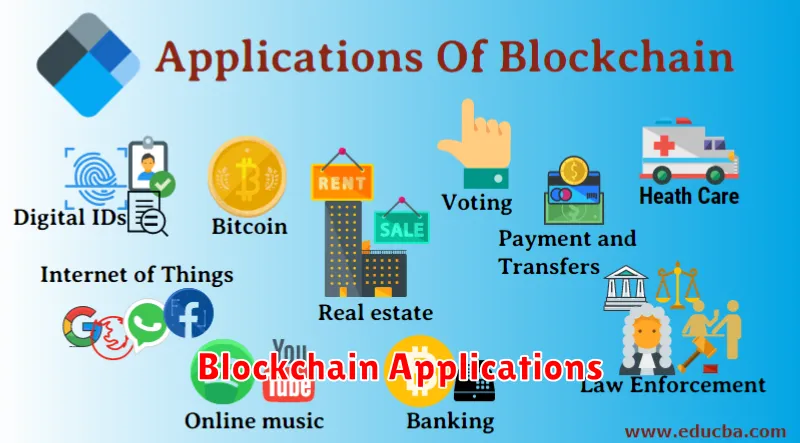Discover the real-world applications of blockchain technology beyond cryptocurrencies. This article explores five practical uses of blockchain, demonstrating its transformative potential across diverse industries. Learn how blockchain is revolutionizing supply chain management, healthcare data security, digital identity verification, voting systems, and financial transactions. Prepare to be amazed by the versatility and impact of this groundbreaking technology.
Blockchain in Voting Systems
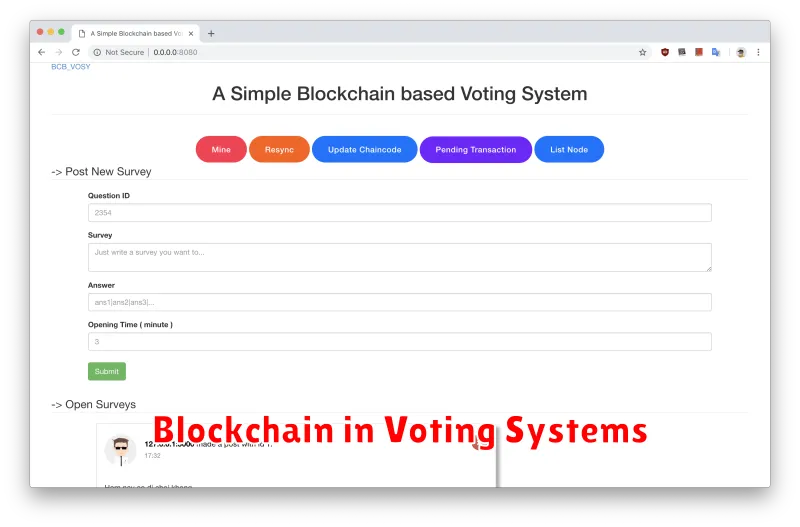
Blockchain technology offers a potential solution to enhance the security and transparency of voting systems. Its decentralized and immutable nature makes it difficult to tamper with voting records.
A blockchain-based voting system would record each vote on a distributed ledger, making it virtually impossible to alter or delete individual votes. This significantly reduces the risk of fraud and increases voter confidence in the integrity of the election process.
Transparency is another key benefit. While maintaining voter anonymity, the system would allow for public verification of the total number of votes cast and potentially the results themselves, fostering greater trust and accountability.
However, implementation requires addressing challenges such as the need for robust digital identity verification systems to prevent voting fraud, the technological literacy of voters, and the scalability of the blockchain to accommodate large-scale elections.
Despite these hurdles, the potential for a more secure and transparent voting process using blockchain technology makes it a compelling area of ongoing research and development.
Digital Identity Verification
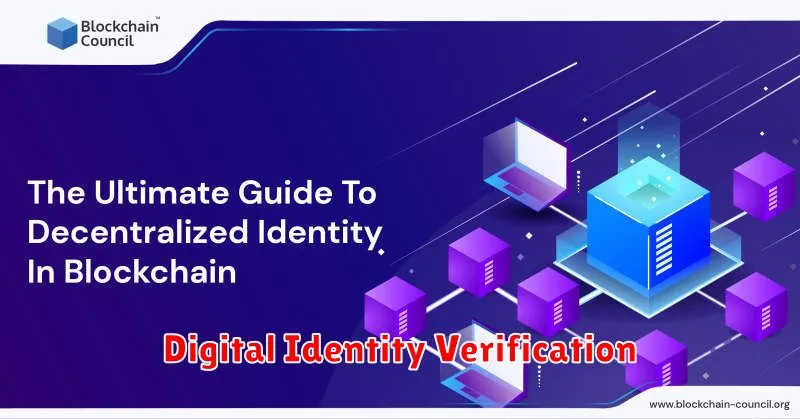
Blockchain technology offers a revolutionary approach to digital identity verification. Its decentralized and immutable nature ensures a high level of security and trust, unlike traditional centralized systems vulnerable to hacking and data breaches.
By storing identity information on a blockchain, individuals gain greater control over their data. They can selectively share verified attributes with organizations, reducing the risk of identity theft and enhancing privacy. This eliminates the need for multiple usernames and passwords across different platforms, simplifying the user experience.
Applications range from secure online voting and financial transactions to streamlining healthcare and supply chain management. The technology allows for verifiable credentials, significantly improving authentication and authorization processes. This facilitates faster, more secure, and more trustworthy interactions in the digital world.
The inherent transparency of blockchain also contributes to its effectiveness. All transactions regarding identity verification are recorded on the blockchain, creating an auditable trail that improves accountability and reduces fraud. This builds trust among participants and promotes greater efficiency.
In essence, blockchain-based digital identity verification systems empower individuals with more control, enhance security, and facilitate seamless digital interactions. It’s a significant step towards a more secure and trustworthy digital future.
Tracking Art Provenance with NFTs
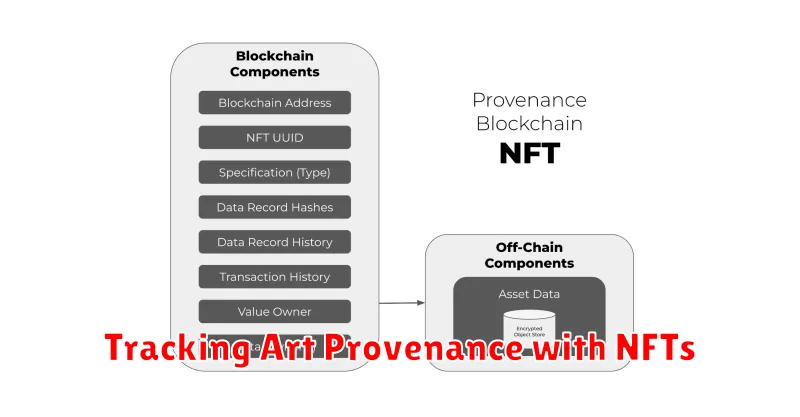
Non-fungible tokens (NFTs) offer a revolutionary approach to art provenance tracking. The immutable nature of blockchain technology allows for the creation of a permanent, verifiable record of an artwork’s ownership history.
Each time an artwork changes hands, a new transaction is recorded on the blockchain, creating a transparent and auditable trail. This eliminates the possibility of forgery and significantly reduces disputes regarding authenticity.
Artists benefit from increased control over their work, receiving royalties on secondary sales. Collectors gain confidence in the authenticity of their acquisitions, enhanced by the verifiable history provided by the NFT. This improved transparency builds trust and increases the overall value and liquidity of the art market.
The use of NFTs simplifies the complex process of art authentication and provenance, making it easier and more efficient for all parties involved. This technology provides a secure and transparent system that benefits both artists and collectors alike.
Blockchain for Energy Trading
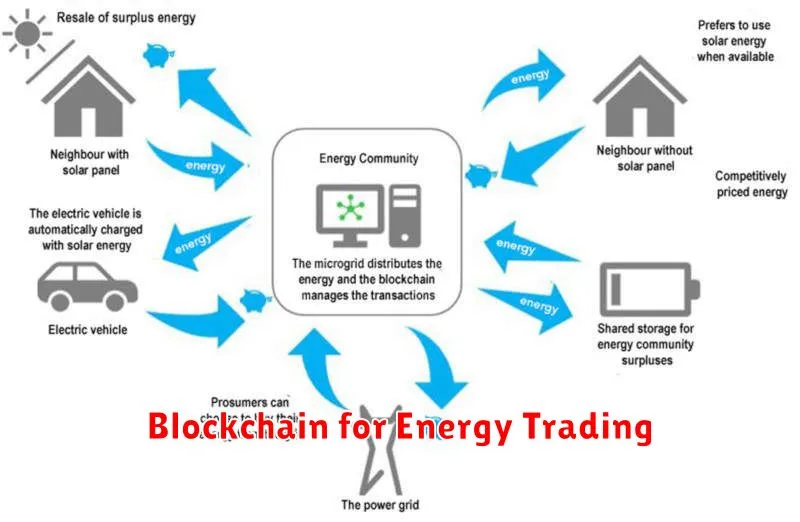
The energy sector is ripe for disruption, and blockchain technology offers a promising solution to several longstanding challenges. Blockchain’s decentralized and transparent nature allows for secure and efficient energy trading, eliminating the need for intermediaries and reducing transaction costs.
One key application is in peer-to-peer (P2P) energy trading. Blockchain facilitates direct transactions between energy producers (e.g., homeowners with solar panels) and consumers, bypassing traditional utilities and enabling microgrids. This model fosters greater energy independence and potentially lower prices for consumers.
Furthermore, blockchain enhances energy traceability and accountability. Tracking energy production and consumption from source to end-user becomes more transparent, preventing fraud and enabling efficient renewable energy credit (REC) trading. This increased transparency improves the overall efficiency and sustainability of the energy market.
Smart contracts, another core feature of blockchain, automate energy trading agreements, reducing reliance on manual processes and human error. This automation ensures faster and more reliable transactions, improving overall market liquidity.
In summary, blockchain’s potential to revolutionize energy trading lies in its ability to improve efficiency, transparency, and security, ultimately leading to a more sustainable and cost-effective energy sector.
Reducing Fraud in Supply Chains

Blockchain technology offers a powerful solution to the pervasive problem of fraud in supply chains. Its decentralized and immutable ledger creates a transparent and auditable record of every transaction and product movement. This eliminates the possibility of altering information retroactively, a common tactic in fraudulent activities.
By providing real-time traceability, blockchain helps to identify counterfeit goods and prevent their entry into the supply chain. Businesses can verify the authenticity of products at each stage, from origin to consumer, thereby reducing the risk of fraud associated with counterfeit products and materials. This enhanced transparency also allows for easier detection of other fraudulent activities such as product diversion, mislabeling, and theft.
The shared and secure database inherent in blockchain technology fosters increased trust and collaboration amongst all supply chain participants. This shared visibility empowers businesses to identify and address fraudulent activities more quickly and efficiently, improving overall supply chain integrity and reducing financial losses.
Furthermore, blockchain’s enhanced security features, such as cryptographic hashing and digital signatures, make it significantly more difficult for malicious actors to tamper with data or forge documents. This strengthens the overall security posture of the supply chain, making it a less attractive target for fraudulent activities.
Ultimately, the implementation of blockchain in supply chain management can significantly reduce instances of fraud, leading to cost savings, improved brand reputation, and increased consumer confidence.
